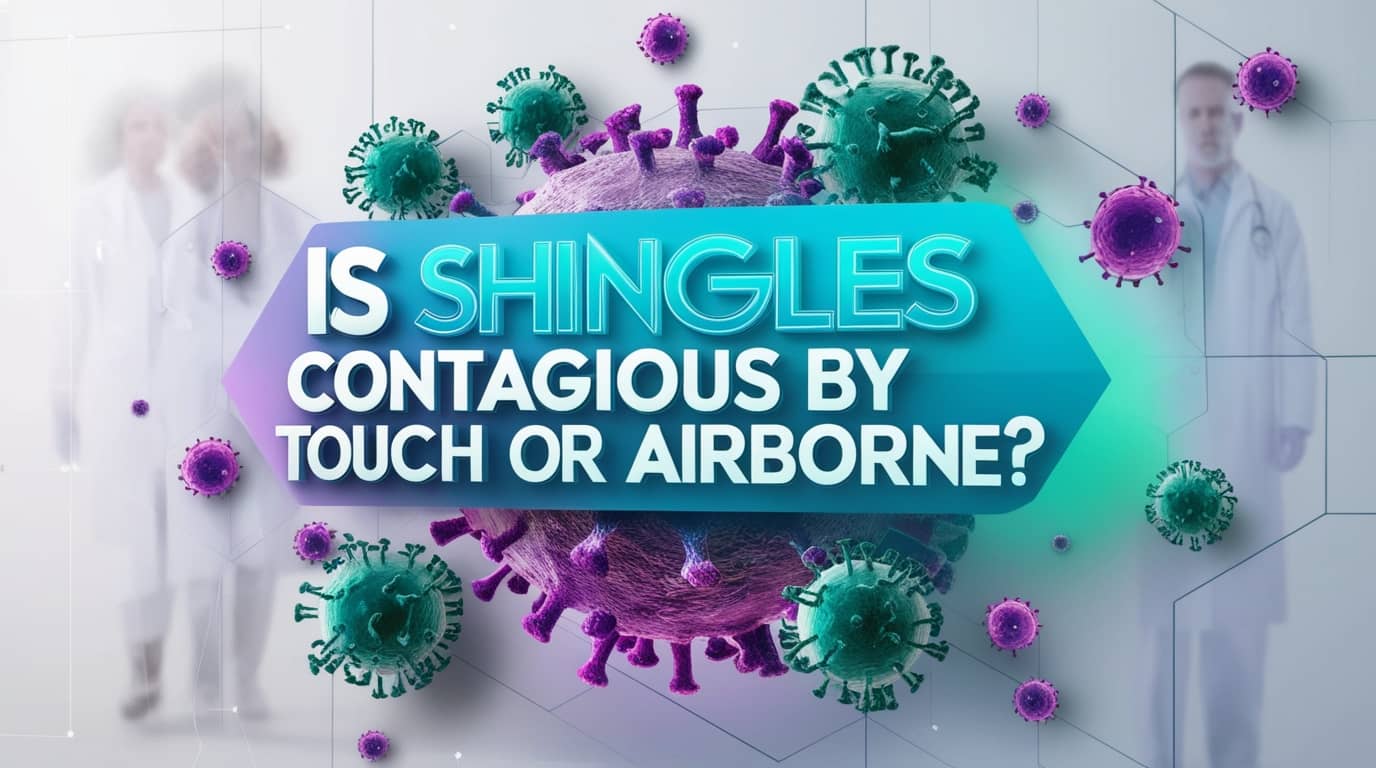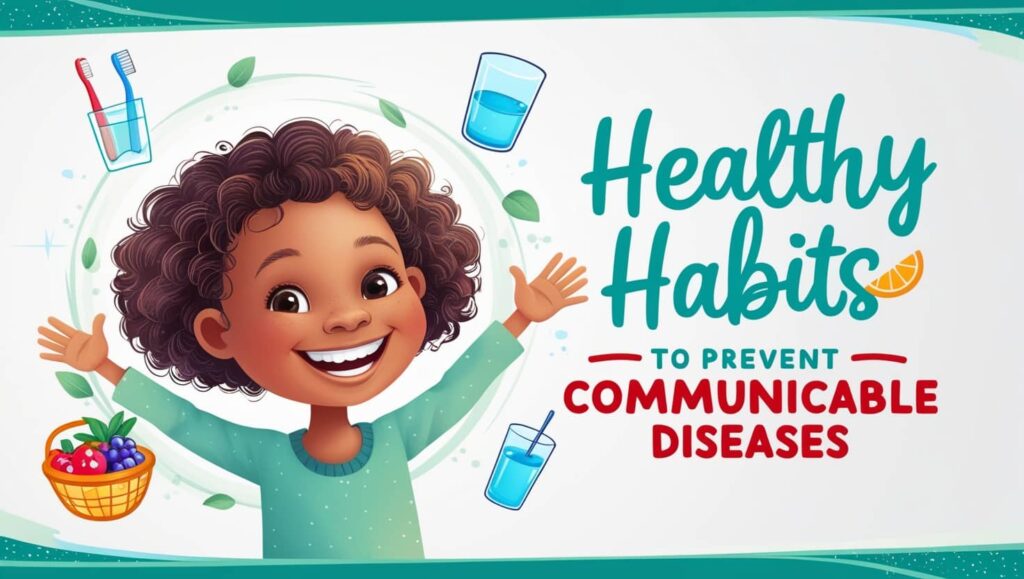Shingles, or Herpes Zoster, is a virus that causes blisters and a painful rash.
One frequently asked question is: Is shingles contagious by touch or airborne?
Understanding the transmission mechanisms of shingles, which spreads via airborne particles or under particular conditions, is crucial for both affected individuals and those around them.
This overview delves into the etiology of shingles and answers the previous question. Now, continue gaining insights!
Is Shingles Contagious by Touch or Airborne?
Is shingles contagious by touch or airborne? There are two possible answers to this question: yes and no according to touch, this means that you won’t have shingles symptoms yourself if you are around someone who has them.
However, the varicella-zoster virus, which can cause chickenpox in people who have never had chickenpox or its vaccination, can disseminate by direct contact with fluid from a shingles rash.
The risk of spreading the virus is reduced if shingles blisters are kept covered.
The National Library of Medicine also reports that there is proof of airborne transmission.
One case, for example, was a 15-year-old child who contracted the varicella-zoster virus two weeks after his father contracted herpes zoster.
Importantly, this patient had never received a varicella vaccination.
This case suggests that for unvaccinated individuals living in close quarters, a localized herpes zoster infection can potentially spread through the air.
What Causes Shingles in Adults?
Reactivation of varicella-zoster virus, which causes chickenpox, is the main cause of shingles, also called herpes zoster.
When a person contracts chickenpox, the virus remains dormant in the dorsal root ganglia.
Later in life, however, it can reactivate and manifest as shingles under specific conditions.
Furthermore, several risk factors can contribute to the reactivation of the latent virus in the dorsal root ganglia leading to shingles, including:
- Age where individuals over 50 years are at high risk of infection with shingles.
- Chronic diseases, for example, lymphoma, leukemia, diabetes mellitus, and lung diseases like asthma.
- A weakened immune system due to medications that suppress the immune response, such as chemotherapy or high doses of steroids.
- Additional risk factors include COVID-19 or HIV infection.
- Males are less prone than females to develop shingles.
Is Shingles Contagious to Adults?
Adults who have never had chickenpox can only contract shingles by coming into close contact with blisters that are just starting to erupt.
These blisters produce pus-containing fluid before crusting over.
As a result, you will contract shingles, which typically manifests as the following symptoms:
- In contrast to chickenpox, blisters and rash only develop on one side of the body, such as the face, abdomen, and back.
- Itching and burning discomfort before blisters form.
- Fever.
- Headache.
- The skin is numb.
- Upper abdominal pain, especially in the stomach.
Is Shingles Dangerous?
Critical issues may arise, even though the recovery duration from shingles is around three to five weeks.
Taking in consideration these issues are more popular in older adults with weakened immune systems, this results in:
- postherpetic neuralgia(PTN).
- Bacterial infections.
- Vision problems.
Postherpetic neuralgia
Postherpetic neuralgia defines pain in a dermatomal distribution that is extended for at least 90 days after the rash.
It occurs due to an inflammatory response induced by viral replication within a nerve, causing damage to it.
Postherpetic neuralgia is painful and impairs quality of life.
It continues with signs such as
- Pain like pins.
- Itching and sensitivity when touching the infected area.
According to studies, nearly 20% of patients with shingles and 80% of cases occurring in people over 50 years are likely to have this issue.
Moreover, additional nervous system problems could arise;
- Inflammation of tissues surrounding the brain and spinal cord causes meningitis.
- Shingles may affect the nerves in the face around the ears, causing face paralysis and tinnitus; this case is called Ramsay-Hunt syndrome.
- Myelitis means paralysis and weakness of muscles surrounding the inflamed spinal.
Bacterial infection
Bacterial infection can occur when the virus penetrates the skin and enters the body, leading to several problems, such as pneumonia, an infection of the lungs.
Furthermore, Streptococcus bacteria may be responsible for this infection, presenting signs of the affected area as swelling, redness, warmth, and discomfort.
Additionally, It is important to note that infection with shingles during pregnancy can result in infections in the fetus and difficulties in the newborn.
Vision problems.
When shingles infect the eye, several issues may occur, involving:
- Conjunctivitis, with signs of redness, burning and oozing inside the eye
- Blurry vision.
- Disintegration of the carena surface.
- Inflammation of optic nerve.
- Cataract and dry eye.
Is It Safe to Be Around Someone With Shingles?
To ensure safety around someone with shingles, follow these instructions:
- Avoid touching blisters or rash openings.
- Wear gloves when dressing the infected wounds.
- Put on a mask if you live with an individual who has varicella-zoster virus.
- Avoid close contact with an individual who has shingles.
Finally, to avoid infection with shingles, the most effective way is to receive the shingles’ vaccine, especially for people over 50 years of age.
This vaccine is known as Shingrix, was approved by the FDA In 2017 and is given in two doses.
Read Also: Pain in Left Hip Area in Female
Summary
Is shingles contagious by touch or airborne? Here is the response to the query:
Shingles or Herpes Zoster Is contagious by touch through fluid from a shingles rash, while airborne transmission may spread through the air for unvaccinated individuals in close quarters.
Herpes Zoster can reactivate due to several factors including age over 50, chronic diseases, weakened immune systems, COVID-19, and HIV infection.
Shingles are dangerous and cause critical issues such as postherpetic neuralgia, Bacterial infections, and vision problems.
To ensure safety around shingles patients, avoid touching blisters, dressing infected wounds with gloves, wearing masks, close contact, and receiving Shingrix vaccine.
References
- Centers for Disease Control and Prevention. (n.d.). About shingles (herpes zoster). Centers for Disease Control and Prevention. From CDC
- Shingles | National Institute on Aging. (n.d.-d). From NIH
- Hatsushika, Y., Nii, I., & Taniguchi, T. (2021, September 3). Varicella caused by airborne transmission of a localized herpes zoster infection in a family. BMJ case reports. From PubMed
- Kawai, K., & Yawn, B. P. (2017, October 4). Risk factors for herpes zoster: A systematic review and meta-analysis. Open Forum Infectious Diseases. From PubMed
- Centers for Disease Control and Prevention. (n.d.-b). Shingles symptoms and complications. Centers for Disease Control and Prevention. From CDC
- Giannelos, N., Curran, D., Nguyen, C., Kagia, C., Vroom, N., & Vroling, H. (2024, June 19). The incidence of herpes zoster complications: A systematic literature review – infectious diseases and therapy. From SpringerLink.
- Nair, P. A. (2023, September 4). Herpes zoster. StatPearls [Internet]. From NIH





